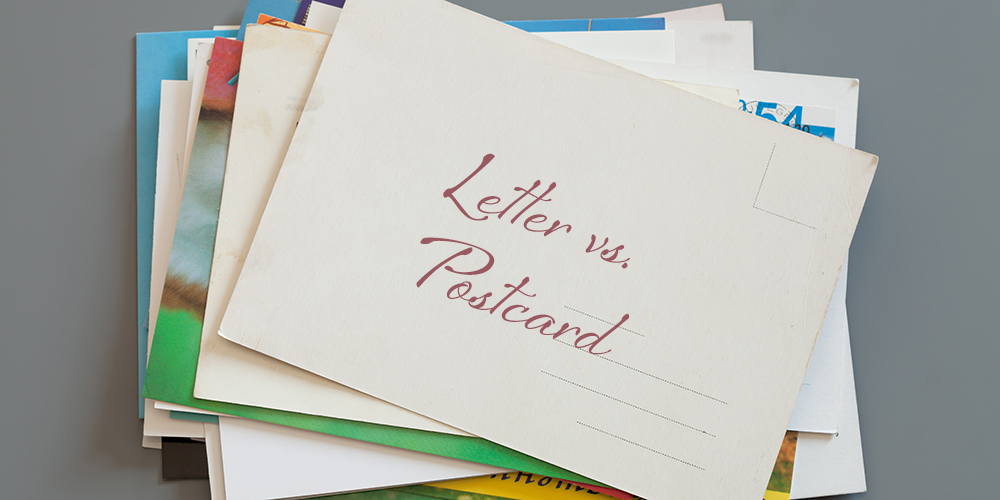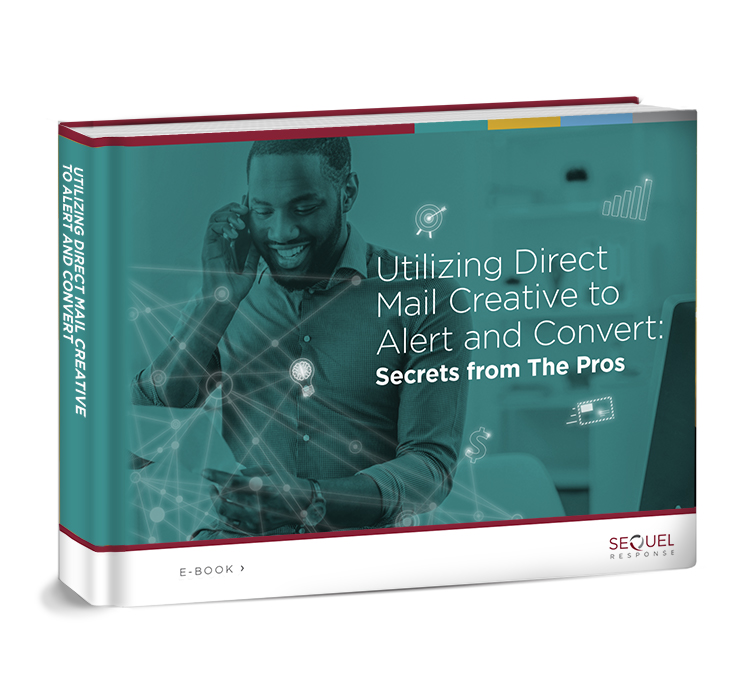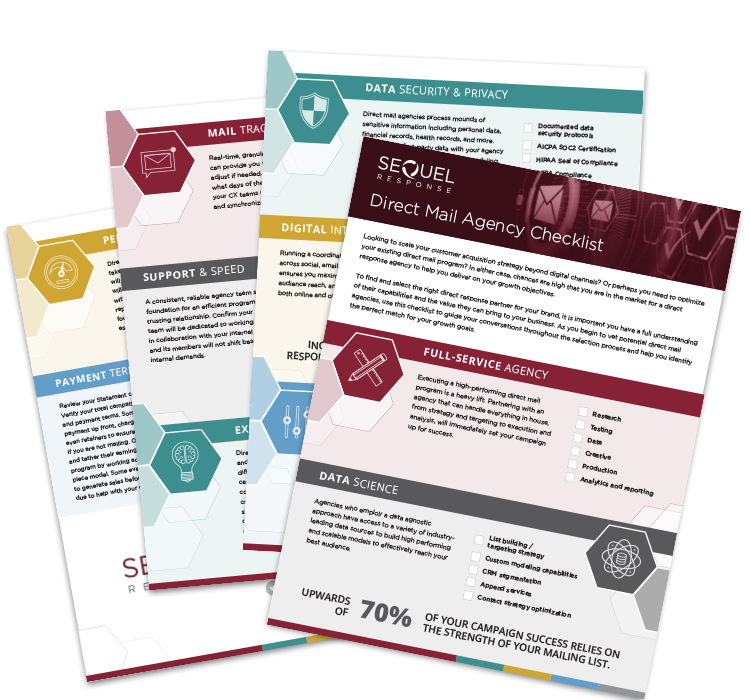Letter vs Postcard: What Format is Right for My Brand?

Envelopes and postcards are two of the most effective direct mail formats for delivering a brand’s marketing message. Both offer strong response rates and impressive ROI—but how do you determine which format best aligns with your brand’s voice, industry, and marketing objectives? In this article, we’ll cover the differences between official (envelope) and promotional (postcard) direct mail formats to help you decide which one is best for your business.
What’s the Most Effective Direct Mail Format Between a Letter and a Postcard?
1. Official Letter (Envelope): A Trusted & Personalized Approach

- The sender has an existing relationship with the recipient.
- The information inside is important, relevant, or even urgent.
- It may contain special offers, statements, or other essential documents.
Unlike direct mail advertising postcards, which use bold designs and visuals to attract attention, official letters rely on personalized storytelling and strategic formatting to engage the recipient.
Why Choose the Letter Format?
- Ideal for High-Trust Industries: This format is commonly used by financial institutions, insurance providers, healthcare services, and nonprofit organizations.
- Personalized & Private: Enclosed letters allow for a more detailed, one-on-one conversation with the recipient.
- Higher Response Rates: According to the 2021 Response Rate Report from the Association of National Advertisers (ANA), letter-size mail generates an average ROI of 112%, the highest among all marketing media.
- Customizable Components: Letter format often includes additional inserts such as brochures, coupons, or response forms to enhance engagement.
Potential Drawbacks
- Higher Production & Postage Costs: Envelopes, printing, and multiple inserts can increase expenses.
- Longer Lead Time: More components mean longer preparation and mailing times.
- Less Visually Striking: Compared to direct mail postcard marketing, official letters rely more on copy than design to drive action.
The direct mail letter format is a great option for businesses that require a personal, authoritative touch. However, if you’re looking for a cost-effective and highly visual approach, postcard mailing services may be a better fit.
2. Postcards (Promotional): A Bold & Instant Impression

Often considered a “promotional” format for direct mail, postcards offer a highly visual and easy-to-digest way to communicate with consumers. Unlike direct mail envelopes, postcards don’t require the recipient to open anything—your message is immediately visible, making it a powerful tool for quick engagement.
Why Choose Postcard Direct Mail?
- Immediate Visibility: Your message is instantly visible because there is no envelope.
- Perfect for Brand Loyalists: Postcards work best for consumers who already recognize and trust your brand.
- Highly Effective for Promotions: This format is ideal for retail, travel, food, clothing, and service-based industries.
- Fast & Cost-Effective: Typically, postcards are more affordable to produce and send compared to direct mail letter formats.
- Encourages Social Sharing: Postcards are easy for recipients to pass along to friends and family.
Best Uses for Direct Mail Postcards
- Sales & Promotions: Use postcards for discounts, seasonal sales, and limited-time offers.
- New Product or Store Announcements: Direct mail postcards can be used to introduce your latest products or store openings.
- Event Invitations: Postcards are perfect for grand openings, special in-store events, or community gatherings.
- Loyalty & Retention Campaigns: Use postcards as a way to engage existing customers with exclusive special offers.
The Stats: Growing in Popularity
With rising postage costs and shrinking consumer attention spans, postcards have become a go-to direct mail format for many marketers. From 2017 to 2021, postcards made up 48% of all mail (a 19% increase since 2016).
- 49% of marketers use postcards for house lists (existing customers).
- 51% use them for prospect lists.
- The direct mail response rate for postcards delivers an impressive 85% ROI.
While some consider direct mail postcards to be less personal than direct mail letter formats, they can actually extend your reach, as recipients can easily share them. Whether they lead to an immediate conversion or end up in the recycling bin, one thing is certain—your message was seen!
The Hybrids: The Best of Both Types of Direct Mail
Sometimes, neither direct mail letter formats nor direct mail postcards alone are the perfect fit for your brand. This has led marketing agencies to develop hybrid concepts that combine the best elements of both formats, offering a balance of storytelling, cost, and engagement.
According to respondents in SeQuel Response’s Direct Mail Research, the most profitable direct mail format is the folded self-mailer. This format merges the extended storytelling space of an envelope with a price point closer to a postcard. Unlike traditional direct mail envelopes, which rely on curiosity to drive engagement, folded self-mailers display key details upfront while still encouraging recipients to unfold the piece to discover the full offer.
Another hybrid approach involves using direct mail envelopes with more engaging designs, such as oversized formats, transparent windows, or branded imagery that showcases the company’s identity before the recipient even opens the mail.
While both hybrid formats are immediately recognizable as advertisements, they still tap into FOMO (Fear of Missing Out) to drive curiosity and engagement. By combining the best aspects of traditional mail campaigns, these formats offer an effective way to balance visual appeal, messaging space, and cost-effective production.
Dive Deeper to Maximize Direct Mail Impact in 2025

Our 2024 Direct Mail Industry Report Benchmark Study revealed that 67% of consumers enjoy receiving direct mail advertising, while 90% of marketers report that integrating direct mail into their overall strategy positively impacts campaign performance. These findings highlight the continued effectiveness of direct mail marketing in engaging consumers and driving response.
For a deeper dive into direct mail creative strategy and best practices, download our free e-book, Utilizing Direct Mail Creative to Alert and Convert. This comprehensive guide explores how brands can craft a mail piece that reflects their identity, resonates with their target audience, and drives action. Plus, get an exclusive look at how four DTC brands are using direct mail creative strategy to boost engagement, increase conversions, and maximize direct mail response rates.
Choosing the Right Direct Mail Format for Your Brand
There is no single direct mail format that guarantees success for every brand. The key to an effective campaign is aligning your format with your brand identity, target audience, campaign objectives, and budget.
Partnering with a direct mail agency can help you navigate the complexities of creative design, postal regulations, printing, and production to develop a high-performing campaign. At SeQuel Response, we continuously test and refine strategies to prevent campaign fatigue and maximize results. While sticking with traditional formats may seem like the safest choice, exploring new direct mail concepts could unlock unexpected performance gains. With a proven approach to direct mail marketing, we’ve helped over 100 clients reach millions of prospects! Are you ready to grow?

